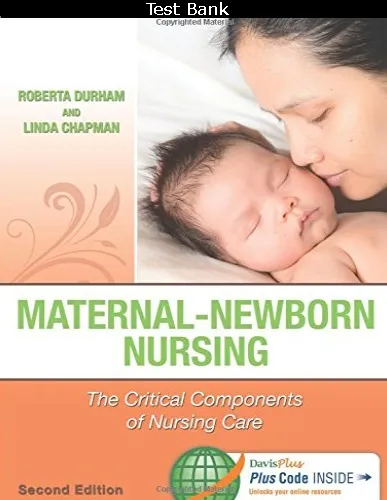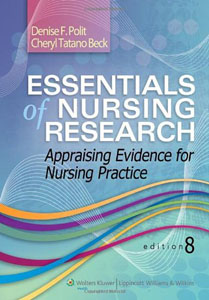Maternal-Newborn Nursing: The Critical Components of Nursing Care 2nd edition Test Bank
$55.00 Original price was: $55.00.$16.00Current price is: $16.00.
Digital item No Waiting Time Instant Download
Chapters: 19
Format: PDF
ISBN-13: 978-0803666542
ISBN-10: 0803666543
Publisher: F.A. Davis Company
Authors: Roberta Durham, Linda Chapman
Description
Maternal-Newborn Nursing: The Critical Components of Nursing Care 2nd edition Test Bank
Table of Content
Maternity Nursing Overview
1. Trends and Issues
2. Ethics and Standards of Practice Issues
The Antepartal Period
3. Genetics, Conception, Fetal Development, and Reproductive Technology
4. Physiological Aspects of Antepartum Care
5. The Psycho-Social-Cultural Aspects of the Antepartum Period
6. Antepartal Tests
7. High-Risk Antepartum Nursing Care
Intrapartal Period
8. Intrapartum Assessment and Interventions
9. Fetal Heart Rate Assessment
10. High-Risk Labor and Birth
11. Intrapartum and Postpartum Care of the Cesarean Birth Families
Postpartal Period
12. Postpartum Physiological Assessments and Nursing Care
13. Transition to Parenthood
14. High-Risk Postpartum Nursing Care
Neonatal Period
15. Physiological and Behavioral Responses of the Neonate
16. Discharge Planning and Teaching
17. High-Risk Neonatal Nursing Care
Women’s Health
18. Well Women’s Health
19. Alterations in Women’s Health
Chapter 1: Trends and Issues
Multiple Choice
1. Since 1995 there has been a significant decrease in the rate of infant death related to which of
the following:
a. Disorders associated with short gestation and low birth weight
b. Accidents
c. Sudden infant death
d. Newborns affected by complications of placenta, cord, and membranes
ANS: c
Feedback
a. The rates of prematurity and low birth weight
are increasing.
b. The rates of accidents have increased.
c. Correct. The rate of infant death related to
SIDS has decreased from 87.1 to 47.2. The
decrease in rate is partially attributed to placing
infants on their backs when sleeping.
d. The rates of newborns affected by
complications of placenta, cord, and
membranes have increased.
KEY: Integrated Process: Teaching and Learning | Cognitive Level: Knowledge | Content Area:
Maternity | Client Need: Health Promotion and Maintenance | Difficulty Level: Easy
2. Tobacco use during pregnancy is associated with adverse effects on the unborn infant such as
intrauterine growth restriction, preterm births, and respiratory problems. By race, which has the
highest percentages of smokers?
a. American Indian and Alaskan Natives
b. Asian or Pacific Islanders
c. Non-Hispanic blacks
d. Non-Hispanic whites
ANS: a
Feedback
a. 36% of American Indian and Native American
women are cigarette smokers.
b. 4.3% of Asian or Pacific Islander women are
cigarette smokers.
c. 17.1% of non-Hispanic black women are
cigarette smokers.
d. 19.6% of non-Hispanic white women are
cigarette smokers.
KEY: Integrated Process: Clinical Problem Solving | Cognitive Level: Knowledge | Content
Area: Maternity | Client Need: Safe and Effective Care Environment | Difficulty Level: Easy
3. Which of the following women is at the highest risk for health disparity?
a. A white, middle-class, 16-year-old woman
b. An African American, middle-class, 25-year-old woman
c. An African American, upper-middle-class, 19-year-old woman
d. An Asian, low-income, 30-year-old woman
ANS: d
Feedback
a. Although age is a risk factor, income
contributes to disparity.
b. Although African American women are at
increased risk, income accounts for the largest
disparity.
c. Although age and race contribute to increased
risk, income accounts for the largest disparity.
d. Although age and race contribute to increased
risk, income accounts for the largest disparity.
KEY: Integrated Process: Clinical Problem Solving | Cognitive Level: Application | Content
Area: Maternity | Client Need: Health Promotion and Maintenance | Difficulty Level: Moderate
4. A neonate born at 36 weeks gestation is classified as which of the following?
a. Very premature
b. Moderately premature
c. Late premature
d. Term
ANS: c
Feedback
a. Very premature is less than 32 weeks’
gestation.
b. Moderately premature is 32 to 33 completed
weeks’ gestation.
c. Correct. Late premature is 34 to 36 completed
weeks’ gestation.
d. Term is 37 to 42 weeks’ gestation.
KEY: Integrated Process: Clinical Problem Solving | Cognitive Level: Application | Content
Area: Maternity | Client Need: Physiological Adaptation | Difficulty Level: Easy
5. The perinatal nurse explains to the student nurse that a goal of the Healthy People 2020 report
is to:
a. Increase proportion of infants who are breastfed to 93.1%.
b. Increase proportion of infants who are breastfed to 90.7%.
c. Increase proportion of infants who are breastfed to 85.6%.
d. Increase proportion of infants who are breastfed to 83.9%.
ANS: d
A goal of Healthy People 2020 is to increase the proportion of infants who are breastfed from
74% to 81.9%.
KEY: Integrated Process: Teaching and Learning | Client Need: Health Promotion and
Maintenance | Cognitive Level: Application | Content Area: Maternity | Difficulty Level:
Moderate
6. The perinatal nurse explains to the student nurse that __________ is the leading cause of
infant death in the United States.
a. Sudden Infant Death Syndrome
b. Respiratory distress of newborns
c. Disorders related to short gestation and low birth weight
d. Congenital malformations and chromosomal abnormalities
ANS: d
KEY: Integrated Process: Clinical Problem Solving | Cognitive Level: Knowledge | Content
Area: Maternity | Client Need: Safe and Effective Care Environment | Difficulty Level: Difficult
Multiple Response
7. Which of the following statements are true related to teen pregnancies? (Select all that apply.)
a. Teen mothers are at higher risk for HIV.
b. Teen mothers are at higher risk for hypertensive problems.
c. The birth rate for teenaged women has increased in the past 15 years.
d. Infants born to teen mothers are at higher risk for health problems.
ANS: a, b, d
Health statistics report higher risk for HIV, for hypertensive problems, and for health problems
to infants born to teen mothers. Birth rates for teen mothers in all age categories have decreased
since 1991.
KEY: Integrated Process: Clinical Problem Solving | Cognitive Level: Application | Content
Area: Maternity | Client Need: Health Promotion and Maintenance | Difficulty Level: Moderate





Be the first to review “Maternal-Newborn Nursing: The Critical Components of Nursing Care 2nd edition Test Bank”